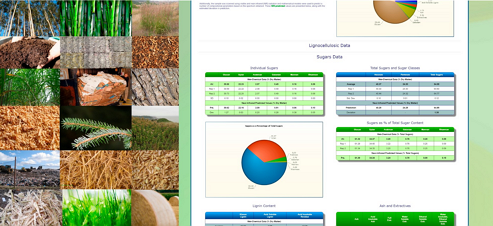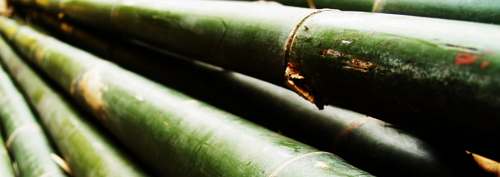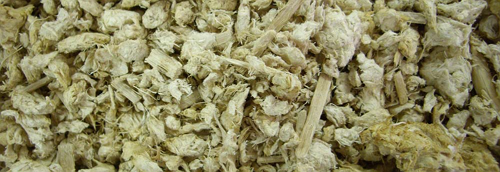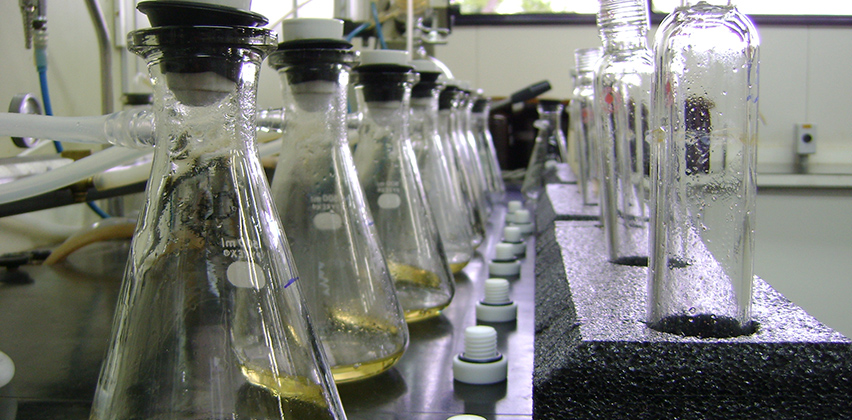How to Determine the Efficiency of Biomass Pretreatment Processes

Backgroud
There has been a considerable focus in recent years on the production of advanced biofuels, also known as cellulosic biofuels, and biomass-derived chemicals in biorefining processes. These technologies use lignocellulosic biomass, which is mostly composed of the biopolymers of cellulose, hemicellulose and lignin. Lignocellulosic biomass is highly abundant and is typically of a significantly lower cost than the biomass (such as wheat, sugar beet and rapeseed) used to produce conventional biofuels.
The key to exploiting the chemical value of lignocellulosics is to depolymerise the lignocellulosic matrix in order to obtain smaller molecules that can be utilised, or further converted to platform chemicals and biofuels. There are two major pathways by which biorefineries undertake this conversion: through hydrolysis processes that aim to liberate sugars from the lignocellulosic polysaccharides (i.e. cellulose and hemicellulose), and through thermal processes (such as pyrolysis and gasification) that degrade more extensively the components of both polysaccharides and lignin.
Why Pretreatment is Necessary

In the hydrolysis process cellulose and hemicellulose are hydrolysed (broken apart) in pure water through attack by the hydrogen atoms of the water molecule on these polysaccharides. This is a very slow reaction, particularly for cellulose due to its recalcitrance to hydrolysis, but it can be sped up using elevated temperatures and pressures, and catalysed by acids (concentrated or dilute) and highly selective enzymes such as cellulases. However, the rates of hydrolysis of cellulose when processing virgin biomass are still very low due to the recalcitrance of the lignocellulosic matrix. In particular, the complex inter-associations between hemicellulose and cellulose, the crystalline nature of much cellulose, and the existence of a physical barrier of lignin surrounding the cellulose fibres are said to be major hindrances.
Biomass is more than just cellulose, however, and the process is complicated by the relative ease with which hemicellulose can be hydrolysed meaning that a severe means of hydrolysis targeted for the liberation of glucose from cellulose may result in the sugars liberated from hemicellulose being degraded.
For these, and other, reasons most hydrolysis technologies involve a pretreatment step prior to the hydrolysis of the cellulose. This typically targets the removal of hemicellulose and/or lignin, leaving a solid predominately cellulosic residue that is more amenable to conversion. The hemicellulose is typically present in the liquid output from the pretreatment and can be valorised in separate processes.
Types of Pretreatments

There are large number of different pretreatment technologies that can be employed in biorefineries prior to the primary hydrolysis stage. One of the more common types is steam explosion which involves partially comminuted biomass being subjected to high pressure steam (at 210–290 C) for several minutes before this steam is rapidly vented, resulting in an explosive decompression and flash cooling of the biomass. Liquid Hot Water is another pretreatment process and involves superheated water (180–230 C) that is kept in the liquid state through high pressures and put in contact with the biomass via various pathways (including co-current, counter-current, and flow-through processes). The process will hydrolyse most of the hemicellulose and up to two thirds of the lignin and one quarter of the cellulose, depending on conditions. The use of dilute-acids is a more well-established pretreatment, whilst other pretreatments involve the use of alkalis and other solvents (e.g. ethanol, acetone etc.). There has also been much research recently on the use of ionic liquids as green solvents for biomass.
Important Considerations When Designing a Pretreatment
Particularly when elevated temperatures and/or chemicals are employed in pretreatment it can be possible for the production of the monosaccharide (e.g. from the hydrolysis of hemicellulose) to not be the end-point of the process. Some sugars may be further degraded to a variety of potential products. This is important since these products can often be inhibitory to fermentation or can otherwise complicate subsequent downstream processing methods. However, a number of these sugar degradation products (such as levulinic acid, furfural, and hydroxymethylfurfural) can be valuable chemicals in their own right and some technologies target their production.
However, in other cases the pretreatments may only partially hydrolyse some of the polysaccharides. This partial hydrolysis can result in a significant proportion of the hemicellulosic and/or cellulosic sugars being tied up in soluble oligosaccharides that are contained within the process liquor. It is important to know whether the soluble sugars are present in monosaccharide or oligomer forms as these will affect downstream processing and the effective valorisation of the liquid component.
Therefore, the compositions of the liquid and solid outputs of biomass pretreatment processes can form a wide spectrum of potential products that can exist in greatly varying concentrations which will depend on: the feedstock, the type of pretreatment, and the wide array of potential pretreatment conditions (e.g. solid loading, temperature, pressure, solvent etc.)
Recommended Analytical Methods to Evaluate Pretreatments

There are three key items that should be analysed to determine the efficiency of a pretreatment process.
(1) The Starting Feedstock
We recommend that a detailed lignocellulosic analysis of the starting feedstock is carried out, including removal of the extractives and determination of their composition. Removal of the extractives is important since we have found that, if not removed, they can lead to elevated values for the lignin content. Furthermore, some biomass can contain significant amounts of water-soluble carbohydrates and extractives removal and characterisation will help to provide clarity on the source of the sugars found when the biomass sample is hydrolysed to determine its lignocellulosic composition. These water-soluble carbohydrates are also likely to be present in the liquid output of many pretreatment processes and, if their concentrations are not known, it may be incorrectly inferred that such sugars present in the liquid must come from lignocellulose.
Similarly, if you expect that there will be some starch in your sample then we also recommend that starch analysis of your starting feedstock be undertaken as this constituent may also be removed and hydrolysed in many pretreatment processes.
When determining the lignocellulosic composition of the sample it is important that each of the constituent sugars within the polysaccharides (e.g. glucose, xylose, arabinose, mannose, etc.) are measured separately so that their fate during the pretreatment process can be monitored.
Additionally, it may be useful to also determine the uronic acid composition of the sample.
(2) The Liquid Product from Pretreatment
We have found that much of the soluble carbohydrates in the liquid outputs of many pretreatment processes exist not as free sugars but as oligosaccharides that can contain as much as ten sugar units. For this reason, we would recommend that the liquid output is analysed for oligomeric sugars as well as for monosaccharides. We determine the oligomeric component by firstly analysing the original liquid for the free monosaccharides and disaccharides (e.g. cellobiose) in solution and then subjecting the liquid to a mild form of acid hydrolysis that will break apart any oligosaccharides into their constituent monosaccharide units. We then analyse the hydrolysate and the proportion of each sugar that is present in the original liquid in the oligomeric form can then be calculated by subtracting the pre-hydrolysis concentration from the post-hydrolysis concentration.
We would also advise that the liquid be analysed for the main organic acid and furanic sugar-degradation products.
(3) The Solid Residue from Pretreatment
While it is likely that most of the conventional biomass extractives will have been removed in the pre-treatment, it is still necessary in many cases to undertake extractives removal of the solid residue from pre-treatment prior to undertaking its lignocellulosic analysis. This is because this residue may contain some of the liquid fraction sorbed onto its particles. The sugars and sugar-degradation products will be retained and concentrated on these particles if the sample is dried and may still be retained even if the sample is washed. Hence, if they are not removed prior to hydrolysis, these sugars may be assumed to come from lignocellulose, giving a false impression of the efficiency of the pre-treatment.
It is also possible that the composition of these sorbed water-soluble constituents will be different from that of the liquid fraction, so we recommend that the water extract is also characterised for its own monomeric/oligomeric sugar composition. These results, coupled with the data from the previous analyses, will help to give a clear and detailed picture on the fate of cellulose, hemicellulose, and lignin during the pretreatment process. We would also recommend that the ash content is determined to see how much ash is solubilised by the pre-treatment.
Analysis at Celignis
We have a lot of experience in analysing many products (both liquid and solid) from biomass pretreatment processes. These samples have covered a wide variety of starting feedstocks and pretreatment processes and conditions. We are able to undertake all of the analytical techniques described above and can provide data that can guide you in engineering the most appropriate pretreatment conditions for your feedstocks and processes.
Please contact us with your specific requirements and we will be happy to select a set of analysis packages suitable for your needs. There is also additional information on the website relating to our analytical techniques for pretreatment liquids, oligosaccharides, sugar-degradation products, and the solid residues from pretreatment processes.






